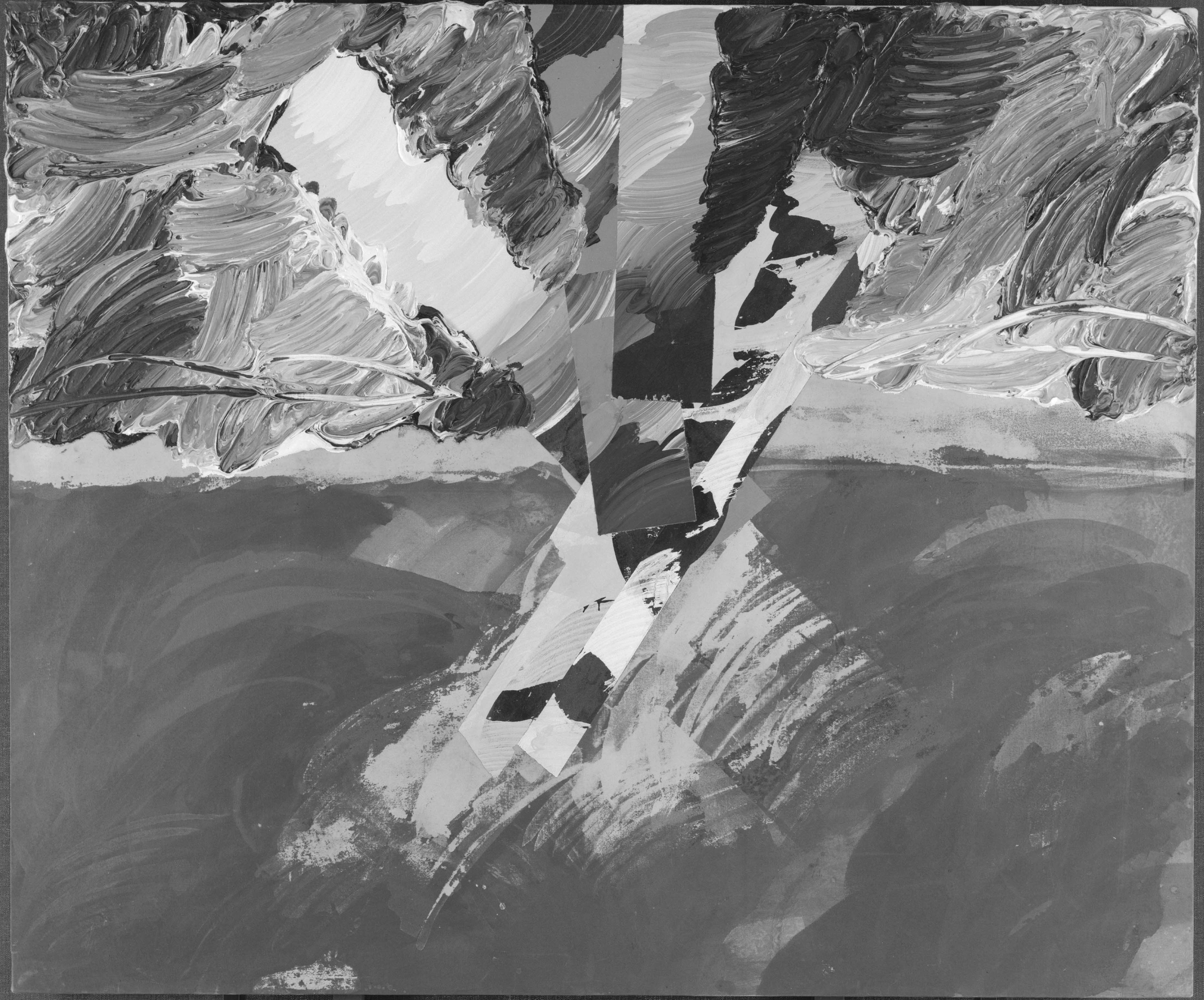Knighton Hosking
Lapwing No. 2
This painting dates from a period in Hosking's career where he was developing from the 'self representational ideas and imagery', which had dominated his work since leaving the Central School of Art in 1966, to landscape figuration related to a recent move to the countryside. He saw and drew 'things that related very strongly to many of my early paintings.’ Gates and feeding-troughs suggested pictorial forms reminiscent of his earlier formal interests.
The artist gathered information via photography as well as by drawing. The photographs were drawn from in the studio and a pictorial structure arrived at, often suggesting sequence of movement. Hosking still felt 'the need to pull the landscape space back to the canvas surface' so that figuration and surface space were balanced. Thus, the 'sky' in Lapwing is the most prominent part of the painting in terms of facticity and the geometricised wings seem (at least against the top half) sunk into the ground or even an aperture of cropped glimpses. The figuration is reduced to the relative play of formal blocks, while the flurry of the sky's brushstrokes takes up the suggestion of flight.

